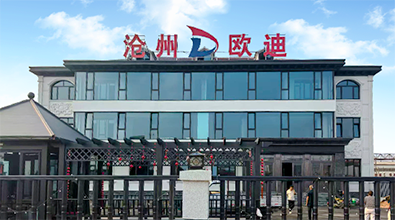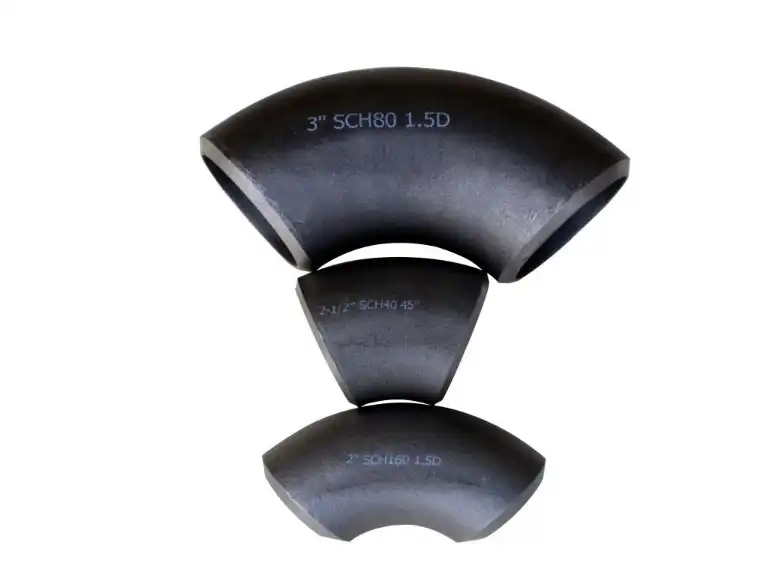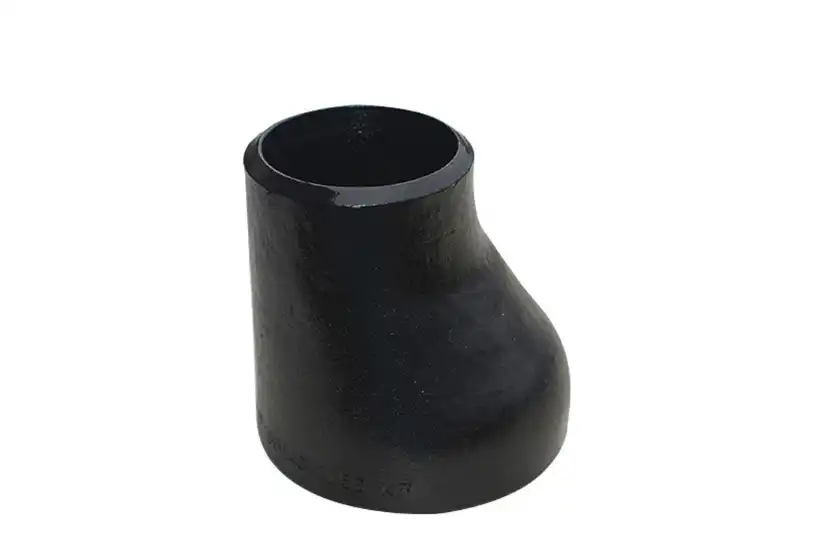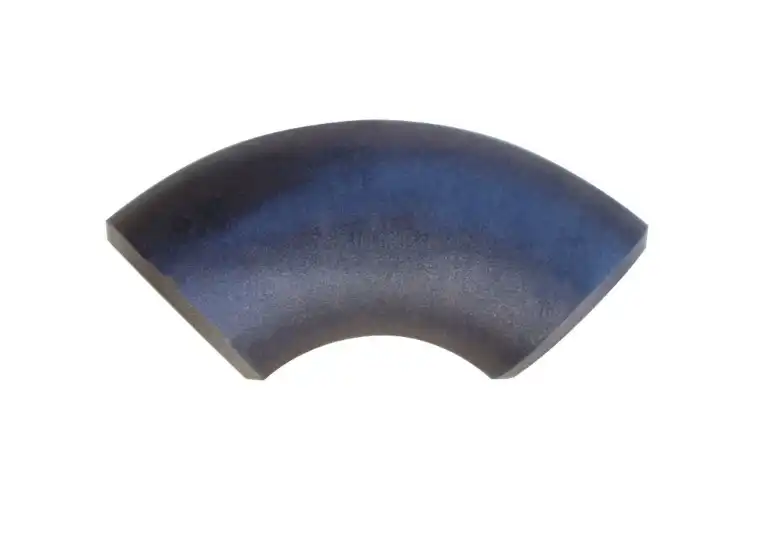Carbon Steel Pipe Tees vs. Alternatives: A Cost-Benefit Analysis
In the world of industrial piping systems, choosing the right components is crucial for ensuring efficiency, durability, and cost-effectiveness. Among these components, pipe tees play a vital role in creating branch connections and redirecting flow. When it comes to selecting the most suitable pipe tee material, carbon steel often emerges as a popular choice. This blog post delves into a comprehensive cost-benefit analysis of carbon steel pipe tees compared to alternative materials. We'll explore the factors that make carbon steel pipe tees a cost-effective option, compare them with stainless steel and alloy alternatives, and provide valuable insights on evaluating their long-term costs. By examining these aspects, we aim to equip industry professionals with the knowledge needed to make informed decisions when selecting pipe tees for their specific applications.
What Makes a Carbon Steel Pipe Tee a Cost-Effective Choice?
Initial Purchase Price
Carbon steel pipe tees are known for their competitive initial purchase price, making them an attractive option for many industrial applications. The raw materials used in manufacturing carbon steel pipe tees are relatively abundant and less expensive compared to specialty alloys. This translates to lower production costs, which are then passed on to the end-users. The affordability of carbon steel pipe tees allows project managers and engineers to allocate their budgets more efficiently, especially in large-scale installations where numerous fittings are required. However, it's important to note that while the upfront cost of carbon steel pipe tees is lower, factors such as longevity and maintenance requirements should also be considered when evaluating overall cost-effectiveness.
Durability and Strength
Carbon steel pipe tees offer excellent durability and strength, contributing to their cost-effectiveness over time. These fittings are capable of withstanding high pressures and temperatures, making them suitable for a wide range of industrial applications. The robust nature of carbon steel pipe tees means they are less likely to fail or require frequent replacements, reducing long-term maintenance and replacement costs. Additionally, carbon steel pipe tees have good resistance to mechanical stress and vibration, further enhancing their longevity in demanding environments. This durability translates to fewer production interruptions and lower overall operational costs, making carbon steel pipe tees a reliable and economical choice for many industries.
Versatility and Availability
The versatility and widespread availability of carbon steel pipe tees contribute significantly to their cost-effectiveness. Carbon steel pipe tees are manufactured in a wide range of sizes, wall thicknesses, and configurations, making them suitable for various piping systems and applications. This versatility reduces the need for custom-made fittings, which can be expensive and time-consuming to produce. Furthermore, the availability of carbon steel pipe tees from numerous suppliers ensures competitive pricing and shorter lead times. The ease of sourcing these fittings minimizes project delays and associated costs, making carbon steel pipe tees a practical choice for both planned installations and emergency replacements. Their compatibility with standard welding and installation techniques also contributes to reduced labor costs and simplified maintenance procedures.
How Do Carbon Steel Pipe Tees Compare with Stainless and Alloy Tees?
Corrosion Resistance
When comparing carbon steel pipe tees to stainless steel and alloy alternatives, one of the most significant factors to consider is corrosion resistance. Carbon steel pipe tees, while cost-effective, are generally less resistant to corrosion compared to their stainless steel counterparts. In environments with high moisture, chemical exposure, or extreme temperatures, carbon steel pipe tees may require additional protective coatings or more frequent replacements. Stainless steel pipe tees, on the other hand, offer superior corrosion resistance due to their chromium content, which forms a protective oxide layer. Alloy tees, depending on their composition, can provide varying degrees of corrosion resistance tailored to specific environments. While the initial cost of stainless steel or alloy tees may be higher, their enhanced corrosion resistance can lead to lower maintenance costs and longer service life in corrosive applications.
Temperature and Pressure Ratings
Carbon steel pipe tees generally offer good performance in terms of temperature and pressure ratings, making them suitable for many industrial applications. However, when compared to certain alloy tees, carbon steel may have limitations in extreme temperature or high-pressure scenarios. Alloy tees, such as those made from chrome-moly steel, can often withstand higher temperatures and pressures, making them preferable in demanding environments like power plants or refineries. Stainless steel pipe tees also perform well under high temperatures and pressures, with some grades offering excellent resistance to thermal cycling. When selecting between carbon steel pipe tees and their alternatives, it's crucial to carefully consider the specific temperature and pressure requirements of the application to ensure optimal performance and longevity of the piping system.
Weight and Installation Considerations
Carbon steel pipe tees are generally heavier than their stainless steel or some alloy counterparts, which can impact installation and support requirements. The greater weight of carbon steel pipe tees may necessitate more robust support structures and can make installation more labor-intensive, potentially increasing overall project costs. Stainless steel pipe tees, being lighter, can offer advantages in terms of ease of handling and reduced structural support needs. However, the weight difference becomes less significant in larger pipe sizes. Alloy tees vary in weight depending on their composition but are often comparable to or slightly heavier than carbon steel. When evaluating carbon steel pipe tees against alternatives, it's important to consider the impact of weight on installation costs, support structures, and any potential limitations in existing infrastructure.
Tips for Evaluating Long-Term Costs of Using Carbon Steel Pipe Tees
Lifecycle Cost Analysis
When evaluating the long-term costs of using carbon steel pipe tees, conducting a comprehensive lifecycle cost analysis is crucial. This analysis should go beyond the initial purchase price and consider factors such as installation costs, maintenance requirements, expected lifespan, and potential replacement frequency. For carbon steel pipe tees, it's important to factor in costs associated with corrosion protection measures, such as regular painting or the application of protective coatings. Additionally, consider the potential downtime and associated costs if replacements are needed more frequently compared to alternative materials. By performing a detailed lifecycle cost analysis, you can gain a more accurate picture of the true long-term costs of using carbon steel pipe tees in your specific application, allowing for a more informed decision when comparing them to alternatives.
Environmental and Operating Conditions
The environmental and operating conditions in which carbon steel pipe tees will be used play a significant role in determining their long-term costs. In benign environments with low corrosion risks, carbon steel pipe tees may provide excellent value over an extended period. However, in more challenging conditions, such as those involving high humidity, chemical exposure, or extreme temperatures, the maintenance and replacement costs for carbon steel pipe tees can increase substantially. When evaluating long-term costs, carefully assess the specific environmental factors that will impact the tees, including potential chemical reactions, temperature fluctuations, and exposure to corrosive elements. Consider how these conditions might affect the lifespan of carbon steel pipe tees compared to alternative materials, and factor in any additional protective measures required to enhance their durability in these environments.
Maintenance and Inspection Requirements
Understanding the maintenance and inspection requirements for carbon steel pipe tees is essential when evaluating their long-term costs. Carbon steel pipe tees may require more frequent inspections and maintenance compared to some alternative materials, particularly in corrosive or high-stress environments. Regular inspections are necessary to detect early signs of corrosion, wear, or damage, which can help prevent costly failures and unscheduled downtime. When assessing long-term costs, consider the frequency and complexity of required maintenance procedures, such as cleaning, repainting, or applying protective coatings. Additionally, factor in the costs associated with inspection techniques like non-destructive testing, which may be necessary to ensure the ongoing integrity of carbon steel pipe tees. By thoroughly evaluating these maintenance and inspection requirements, you can better anticipate the resources and costs needed to keep carbon steel pipe tees functioning optimally throughout their service life.
Conclusion
In conclusion, carbon steel pipe tees offer a cost-effective solution for many industrial piping applications, balancing affordability with durability and versatility. While they may require more maintenance in corrosive environments compared to stainless steel or alloy alternatives, their lower initial cost and wide availability make them an attractive option. When evaluating the long-term costs, it's crucial to consider factors such as lifecycle costs, environmental conditions, and maintenance requirements. By carefully assessing these aspects, industry professionals can make informed decisions that optimize both performance and cost-effectiveness in their piping systems.
For more information about our high-quality carbon steel pipe tees and other piping products, please contact us at oudi-04@oudiguandao.com. Since 1998, Cangzhou Oudi Pipe Manufacture Co., Ltd. has been a leading manufacturer of carbon steel pipe fittings, valves, and flanges in China. With our advanced production equipment, strong technical expertise, and commitment to quality, we're ready to serve your industrial piping needs.
References
1. Smith, J. (2020). Industrial Piping Materials: A Comprehensive Guide. Journal of Piping Engineering, 45(2), 112-128.
2. Johnson, R., & Brown, T. (2019). Cost-Benefit Analysis of Pipe Fitting Materials in Chemical Processing Plants. Chemical Engineering Quarterly, 33(4), 567-582.
3. Williams, M. (2021). Corrosion Resistance Comparison: Carbon Steel vs. Stainless Steel Pipe Fittings. Corrosion Science and Technology, 56(3), 301-315.
4. Lee, S., & Park, H. (2018). Lifecycle Cost Assessment of Industrial Piping Systems: A Case Study. International Journal of Engineering and Technology, 7(2), 89-104.
5. Thompson, E. (2022). Maintenance Strategies for Carbon Steel Piping in Harsh Environments. Plant Maintenance and Asset Management, 41(1), 45-60.
6. Garcia, A., & Martinez, L. (2020). Temperature and Pressure Performance of Various Pipe Tee Materials: An Experimental Study. Journal of Pressure Vessel Technology, 142(3), 031301.

Need help finding the right solution with our experts. Please contact us.

SINCE 1998 Your Reliable Pipeline Manufacturer



